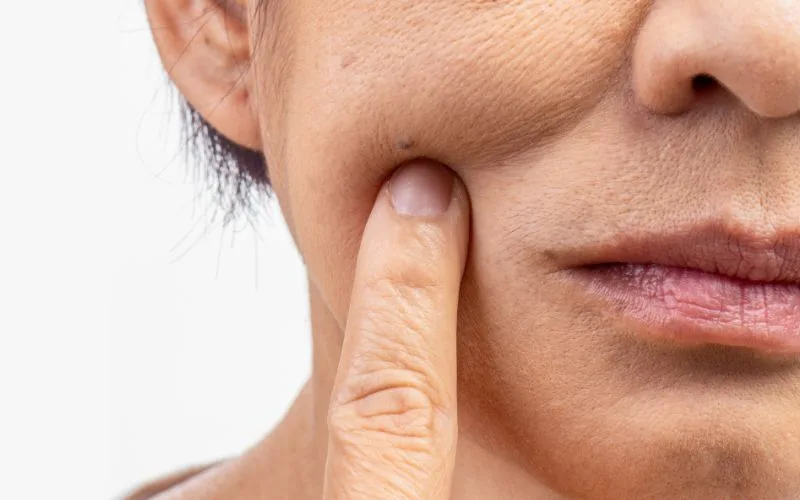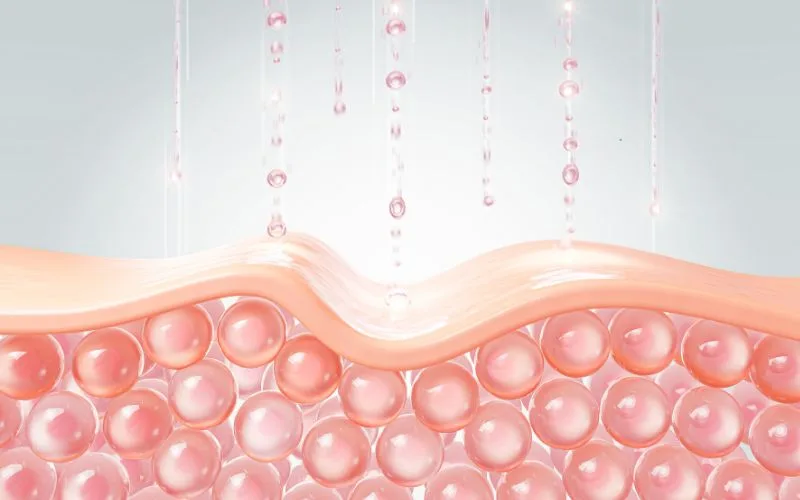Your Skin at 32 vs 22: The Collagen Story
Your skin at 32 doesn’t bounce back the way it did at 22. That’s not imagination—it’s biology. The difference lies in a protein that makes up roughly 75% of your skin’s dry weight: collagen. As collagen levels decline with age, the skin begins to lose its firmness and elasticity—this is where collagen treatment can make a visible difference. Understanding what happens to this structural protein after your third decade, and how collagen treatment helps stimulate new collagen production, reveals much about how our body’s age and what you can do about it.
The Architecture of Youthful Skin
Collagen functions as the scaffolding of your skin. Imagine the framework of a building—the beams and supports that hold everything in place. In your skin, collagen fibers create a dense network in the dermis, the layer beneath the surface you see in the mirror. These fibers provide structure, elasticity, and that quality we recognize as firmness.
Three types of collagen exist in skin, but Type I collagen makes up about 80% of the total. Type III accounts for most of the remainder, while Type VII anchors the epidermis to the dermis. Together, they create a matrix that supports skin cells, blood vessels, and everything else that makes skin function as a living organ.
When collagen networks remain intact and dense, skin maintains volume. It resists gravity. It bounces back when pressed. The visible result is what we typically associate with youth: smooth texture, minimal lines, and defined contours.
What Changes at 30
The shift begins earlier than most people realize. Collagen production peaks in your early twenties, then begins a gradual decline. By age 30, this decline becomes measurable in ways that start to show on your face.
Research indicates that collagen production decreases by approximately 1-1.5% per year after age 30. That might sound minor, but it’s cumulative. By age 40, you’ve lost 10-15% of your collagen. By 50, the loss can exceed 25%. This isn’t a sudden change—it’s a steady erosion that compounds over time.
Several mechanisms drive this loss. Fibroblasts, the cells responsible for producing collagen, become less active with age. They don’t replicate as efficiently, and when they do produce collagen, they often create it in a less organized pattern. The new collagen fibers don’t integrate as smoothly into the existing network.
Meanwhile, collagen breakdown accelerates. Enzymes called matrix metalloproteinases (MMPs) degrade collagen as part of normal tissue remodeling. In younger skin, production and breakdown remain balanced. After 30, breakdown begins to outpace production. The net effect is a slowly thinning dermal layer.
Hormonal changes compound these effects, particularly in women. Estrogen plays a significant role in collagen synthesis. During perimenopause and menopause, estrogen levels drop substantially. Studies have shown that women can lose up to 30% of their skin collagen in the first five years after menopause. This explains why aging often appears to accelerate during this period.
External Factors That Accelerate Collagen Loss
Age-related decline happens to everyone, but external factors can significantly speed the process. Ultraviolet radiation stands out as the most significant accelerator. UV exposure triggers a cascade of events in skin cells: free radical formation, inflammatory responses, and increased MMP activity. Even incidental sun exposure—walking to your car, sitting near a window—accumulates over decades.
This process, called photoaging, can account for up to 80% of visible facial aging. People who spent their twenties outdoors without adequate sun protection often see collagen loss manifesting earlier and more dramatically than those who protected their skin.
Smoking represents another major factor. Nicotine constricts blood vessels, reducing nutrient delivery to skin cells. The thousands of chemicals in cigarette smoke generate oxidative stress, directly damaging collagen fibers and triggering inflammatory pathways that promote breakdown. Research shows smokers have measurably thinner skin and more pronounced wrinkles than non-smokers of the same age.
Diet influences collagen status as well. High sugar consumption leads to glycation, a process where sugar molecules bind to collagen fibers, making them stiff and brittle. This glycated collagen (called advanced glycation end products, or AGEs) functions poorly and resists normal repair processes. The Mediterranean diet pattern, rich in antioxidants and anti-inflammatory compounds, appears protective against collagen loss.
Chronic stress elevates cortisol levels, which has been shown to decrease collagen production while increasing breakdown. Sleep deprivation has similar effects. Even chronic dehydration affects the dermal matrix, making the structural network less resilient.
The Visible Consequences
Collagen loss manifests in specific, recognizable patterns. Fine lines appear first around the eyes and mouth—areas where skin is thinnest and most mobile. These lines initially show only with facial expressions, but as collagen continues to decline, they become static, visible even in a neutral expression.
The skin becomes thinner overall. You might notice veins showing more prominently on your hands or chest. Texture changes, becoming less smooth. Pores may appear larger as the surrounding tissue loses the structure that keeps them taut.
Volume loss creates perhaps the most dramatic changes. The face doesn’t just wrinkle—it deflates. The temples hollow. Cheeks flatten and descend. Jowls form as tissue along the jawline loses support. These changes alter facial proportions and contours in ways that read as aging even from a distance.
Skin also loses elasticity, measured scientifically as reduced “snap-back” when pinched. This shows up as sagging around the jawline, neck, and eyelids. The hands and décolletage show collagen loss through crepey texture and prominent tendons and bones.
How Collagen Restoration Works
The question naturally becomes: can lost collagen be replaced? The answer is nuanced. Your body continues producing collagen throughout life, just at reduced levels. The goal of collagen restoration treatment isn’t to return to twenty-year-old production levels—that’s not biologically feasible. Instead, the objective is to stimulate fibroblasts to increase their activity and produce new collagen in a controlled way.
This requires understanding the difference between filling and rebuilding. Traditional dermal fillers add volume by introducing hyaluronic acid or other substances into tissue. They create immediate results but don’t address the underlying collagen loss. They occupy space rather than rebuilding structure.
Collagen stimulation therapy takes a different approach. Rather than adding volume directly, these interventions trigger your body’s natural healing response. When fibroblasts detect certain signals—whether mechanical injury, specific chemical compounds, or particular molecular structures—they activate. They begin producing new collagen and other extracellular matrix components.
This new collagen integrates into existing tissue gradually, creating results that appear natural and improve over time. The process takes months, reflecting the normal timeframe for collagen synthesis and matrix remodeling. This gradual timeline is actually an advantage—changes occur slowly enough that they’re not obviously artificial.
Treatment Approaches for Collagen Restoration
Sculptra Collagen Stimulator
Sculptra uses poly-L-lactic acid (PLLA), a biocompatible synthetic material. When injected into the deep dermis or subcutaneous layer, PLLA microparticles create a controlled inflammatory response. This triggers fibroblasts to produce new collagen around and between the particles.
The PLLA itself gradually biodegrades over 9-12 months. During this time, fibroblasts lay down new collagen tissue. The result is increased volume from your own collagen rather than from the injected material itself. Studies show that Sculptra can stimulate collagen production for up to two years or more after treatment.
This makes Sculptra particularly effective for addressing volume loss in larger areas: cheeks, temples, and the overall facial contour. It works well for people with significant age-related volume loss who want gradual, natural-looking improvement.
Ellansé Collagen Stimulator
Ellansé represents a different type of collagen stimulator. It combines an immediate carrier gel (carboxymethylcellulose) with polycaprolactone (PCL) microspheres. The carrier gel provides instant volume correction, while the PCL microspheres trigger long-term collagen production.
This dual mechanism offers advantages in specific situations. You get immediate improvement from the carrier gel, which then gradually gets replaced by your own collagen as the PCL stimulates production. The PCL microspheres biodegrade very slowly, providing scaffolding for new collagen over an extended period.
Ellansé comes in different formulations that last one, two or three years, depending on the concentration and size of PCL microspheres. This predictable duration allows for treatment planning based on individual needs and goals.
Choosing the Right Approach
Selecting between different collagen restoration treatments depends on several factors: the specific concerns being addressed, the degree of collagen loss, individual healing characteristics, and personal preferences about treatment timeline.
Someone with overall facial volume loss and thinning skin across multiple areas might benefit more from Sculptra’s capacity to stimulate widespread collagen production. A person concerned about specific lines or wanting to restore jawline definition might find Ellansé more appropriate.
Age matters too, though not in the way most people assume. Younger patients in their thirties experiencing early signs of collagen loss can use these treatments preventively. Building collagen reserves earlier potentially slows visible aging. Older patients with advanced volume loss might need a more comprehensive approach, possibly combining different methods.
What to Expect From Collagen Treatments
Understanding the timeline and process of collagen boosting treatment helps set appropriate expectations. These aren’t quick fixes—they’re biological processes that take time.
Immediately after injection, you’ll notice some volume from the product itself and from swelling. This initial volume doesn’t represent the final result. Over the following days to weeks, this initial effect subsides as the swelling resolves.
The actual collagen production process then begins. Fibroblasts respond to the stimulating material, gradually producing new collagen over weeks and months. Results emerge slowly—subtle changes accumulating over time rather than dramatic overnight transformation.
Complementary Collagen Treatment Approaches
While collagen injection in Singapore treatments like Sculptra and Ellansé effectively stimulate new collagen production, they work best as part of a broader approach to skin health.
Sun protection remains fundamental. Daily broad-spectrum SPF prevents the UV damage that accelerates collagen breakdown. This isn’t optional—it’s the single most important thing you can do to preserve existing collagen and protect newly stimulated collagen.
Topical retinoids (prescription tretinoin or over-the-counter retinol) can modestly increase collagen production while reducing breakdown. They work through different mechanisms than injectable collagen stimulators, making them complementary rather than redundant.
Nutrition influences collagen status. Adequate protein provides the amino acids needed for collagen synthesis. Vitamin C is essential for collagen production—your body literally cannot make collagen without it. Antioxidants from colorful fruits and vegetables help protect collagen from oxidative damage.
Take the Next Step
If you’ve noticed changes in your skin’s texture, firmness, or volume, understanding collagen loss is just the beginning. Knowing what treatments can address these changes at a structural level helps you make decisions that align with your goals.
At Kowayo Aesthetic Clinic, we provide comprehensive consultations that assess your specific concerns, evaluate your skin quality and collagen status, and discuss treatment options that fit your situation. Whether you’re interested in collagen stimulator Singapore treatments like Sculptra or Ellansé, or you’re just beginning to explore what’s possible, we can help you understand your options. Book a consultation with us today to discuss how skin tightening collagen treatment approaches might work for you.




